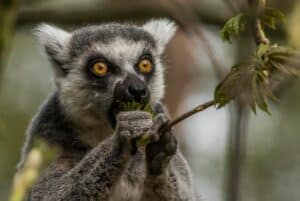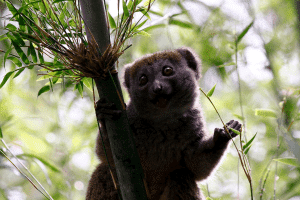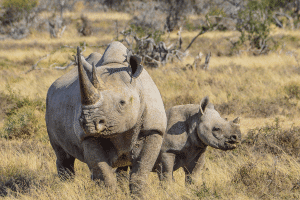Black Rhinos
A living fossil, on the brink
Number of Black rhinos left in the wild
6100
Population decline between 1970-1992
96%
Number poached in 2019
594
Black rhinos are old… like old, old… as in their species is fifty million years old making them the oldest living mammals in the world!
Sightings of Black rhinos used to be extremely common, however the introduction of European settlers obliterated their population. They were relentlessly hunted for their horns and within two decades they were on the brink of extinction.
Efforts have been made to bring their numbers back since 1992, and they’ve made an incredible comeback – but there’s still lots that needs to be done!
We’re working with Save the Rhino International, who are an amazing organisation working really hard to take care of Black rhinos, protecting them from poachers and making sure their population can grow.
Sightings of Black rhinos used to be extremely common, however the introduction of European settlers obliterated their population. They were relentlessly hunted for their horns and within two decades they were on the brink of extinction.
Efforts have been made to bring their numbers back since 1992, and they’ve made an incredible comeback – but there’s still lots that needs to be done!
We’re working with Save the Rhino International, who are an amazing organisation working really hard to take care of Black rhinos, protecting them from poachers and making sure their population can grow.

Threats
Poaching:
Like many endangered species, Black rhinos are also victims of poachers. Their horns are especially in demand as they have two. Despite being illegal to trade, prices for rhino horn are rising.Habitat loss:
As human populations grow; Black rhino’s habitats are lost. Agriculture, settlements, and infrastructure have meant that Black rhinos lose their homes, and as a result increases the risk of poaching and inbreeding.Working with
Black Rhinos
Yorkshire Wildlife Park are proud supporters of Save the Rhino International and Fauna and Flora International.
Ol Jogi Conservancy
We support a rhino conservancy called Ol Jogi, in Kenya, which is run by Save the Rhino International. They work from Ol Jogi to support rangers to protect rhino populations, and make sure they are safe enough so the population can grow. We have funded a few projects at Ol Jogi in the past. Currently we are funding a project that provides cameras to monitor Black rhino, and make sure they are safe from poachers.Sera Wildlife Conservancy
We have provided a 3-year grant to our partners and Fauna and Flora International to be used at their Sera Wildlife Conservancy in Kenya. The grant will be used to take care of the habitat of the animals that live there, which includes Black Rhino. As part of their project, they will put in place a strategy to manage the conservancy over the next 10 years.Facts
Did you know that there isn’t actually a colour difference between White and Black rhinos? What distinguishes the two is the fact that Black rhinos have a hooked upper lip whilst White rhinos have square lips.
Black rhino’s pointed lip helps them feed on leaves from bushes and trees!
Black rhino’s pointed lip helps them feed on leaves from bushes and trees!
Seven Worlds, One Planet
We work with Save the Rhino International at their Ol Jogi conservancy in Kenya.









